Protein Accelerates Fat Loss
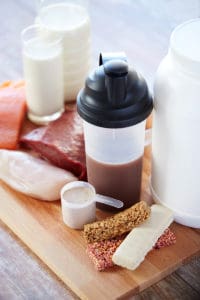 Good news for all guys that love protein, a new study published in the Journal of the International Society of Sports Nutrition reported that a high protein diet in conjunction with a resistance exercise program results in greater losses in body fat.
Good news for all guys that love protein, a new study published in the Journal of the International Society of Sports Nutrition reported that a high protein diet in conjunction with a resistance exercise program results in greater losses in body fat.
According to the International Society of Sports Nutrition, their position stand on protein states that protein intakes of 1.4 –2.0 g/kg/day for physically active individuals is not only safe but may improve the training adaptations to exercise training. Thus, a ceiling of 2.0 g/kg/ day is considered the gold standard for protein intake for athletic performance. Many bodybuilders and lifters will eat one gram per pound of bodyweight. If you ask most dieticians, they will say that it’s unnecessary to eat that much protein and the requirements are much lower. It should be noted that other investigators have suggested that trained individuals may have a lower requirement for protein due to increased efficiency of use of protein.
Accordingly, several studies have shown that strength training, consistent with the anabolic stimulus for protein synthesis it provides, actually enhances the efficiency of use of protein, which reduces dietary protein requirement. It’s true that many studies have shown that there is a ceiling effect for protein for gaining muscle mass, but new research has shown that extra protein can help you lose bodyfat.
Researchers compared a normal protein and a high protein diet and its effect on body composition. Seventy-three resistance-trained subjects volunteered for the investigation. Subjects were unequally randomized to a:
– Control (normal protein intake). The control group was instructed to maintain the same dietary and training habits over the course of the study.
-High protein (HP) group. The subjects in the high-protein diet group were instructed to consume ≥ 3 grams of protein per kg per day (or ≥3g/kg/day).
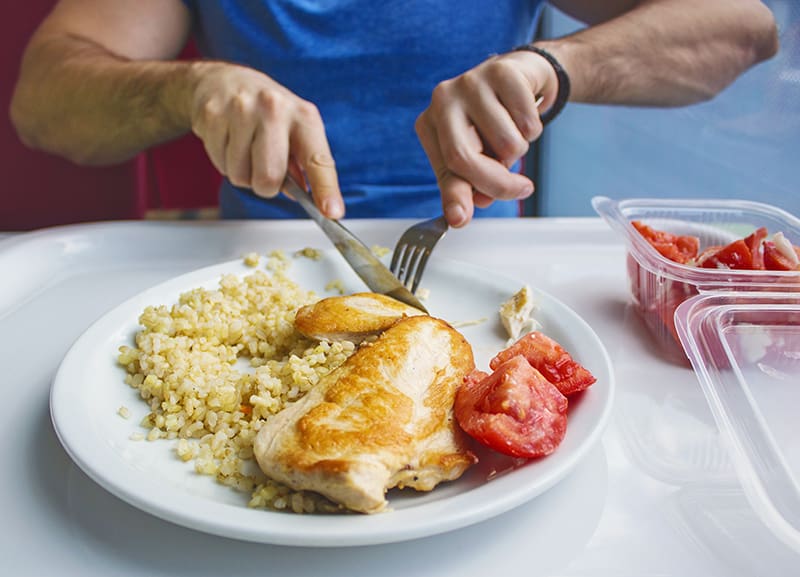 Participants were otherwise healthy resistance-trained men and women who had been weight training regularly. Individuals in the normal protein group were instructed to maintain the same dietary habits over the course of the study. On the other hand, subjects in the high-protein group were told to consume ≥ 3g protein/kg/d. The extra protein could be obtained from whole food or protein powder. At the end of the study, both groups saw decreases in body fat mass and body fat percentage and increases in fat-free mass.
Participants were otherwise healthy resistance-trained men and women who had been weight training regularly. Individuals in the normal protein group were instructed to maintain the same dietary habits over the course of the study. On the other hand, subjects in the high-protein group were told to consume ≥ 3g protein/kg/d. The extra protein could be obtained from whole food or protein powder. At the end of the study, both groups saw decreases in body fat mass and body fat percentage and increases in fat-free mass.
The high protein group lost an average of 1.6 kg of fat mass with the normal protein group only lost 0.3 kg. Additionally, the high protein group saw a 2.4% decrease in body fat with the standard protein group saw a 0.6% decrease in body fat.
This is the first investigation in which a high protein diet in conjunction with a periodized heavy resistance training program was performed; moreover, subjects did not perform any aerobic exercise during the treatment period.
Although the high protein group consumed 350 more kcals per day for protein than the normal protein group, the high protein diet group saw no change in body weight (-0.1 kg) while the normal protein diet group saw an increase in body weight (1.3 kg). The total caloric surplus in the high protein group was 500 calories more per day, with about 80 of those calories coming from carbohydrates (not statistically significant from the normal protein) and about 350 calories extra from protein (this was statistically different), and about 60 calories from fat.
This is quite unusual in that the normal protein group was likely already in a hypercaloric state as they increased their body weight, yet the high protein group that consumed, even more, calories (about 20,000 kcals more over the whole study) did not see an increase in body weight. The high protein group experienced a significantly greater loss of fat mass compared to the normal protein group in spite of the fact that they consumed on average ~400 kcals more per day over the treatment period.
This study also found no harmful effects of consuming a high protein diet on renal function. Thus, professionals who work with athletes (i.e., sports nutritionists, sports dietitians, clinical nutritionists, medical doctors, strength coaches, athletic trainers, etc.) should be aware that athletes can consume very high amounts of protein with no harmful effects over a period of several weeks.

Does Glycemic Index Affect Your Metabolic Rate and Fat Loss?
When the Zone Diet and South Beach Diet first hit the market about a decade ago, it caused a greater awareness of the glycemic index. Dieters all over the US were looking up the slow and fast absorbing starches and what the GI of these foods were for fat loss.
Glycemic Index or GI is a numerical ranking system used to measure the rate of digestion and absorption of foods and their resultant effect on blood glucose. A food ranking high on the GI produces a large, momentary spike in glucose after it is has been consumed. By contrast, food with a low GI causes a slower, sustained rise in blood glucose.
The supposition of low carbohydrate diets is that throughout the day insulin levels are also lower, allowing (or promoting) greater use of fat as the source of fuel. Those who advocate eating low GI foods believe this eating plan will increase the rate of fat utilization. There have been conflicting studies as to the effectiveness of low glycemic index diets, with some diets showing beneficial effects on fat loss whereas other have found them to be no more effective than low-fat diets.
A recently published summary from a workshop on glycemic response and health is in agreement, suggesting at this time there is limited evidence to support the role of a low GI diet for weight loss.
Researchers wanted to examine the effects of diets varying in carbohydrate and glycemic index (GI) on changes in body composition, resting metabolic rate (RMR), and metabolic adaptation during and after weight loss. Adults with obesity were randomized to one of four provided-food diets for 17 weeks. Diets differed in percentage energy from carbohydrate (55% or 70%) and GI (low or high) but were matched for protein, fiber, and energy. Body weight, body composition, and RMR were measured during weight loss and subsequent weight stability.
At the end of the study, no effect of dietary carbohydrate content or GI on body weight loss or percentage of weight lost as fat mass was observed.
The researchers found that the subjects lost a mean 6.1kg of total body weight in the 12-week weight loss intervention. The amount of weight lost did not differ significantly between groups according to either carbohydrate or glycemic index of the diets. Metabolic adaptation did not change by dietary carbohydrate content or GI and was not associated with weight regain 12 months later.
The researchers concluded that Moderate-carbohydrate and low-GI diets did not preferentially reduce fat mass, preserve lean mass, or attenuate metabolic adaptation during weight loss compared to high-carbohydrate and high-GI diets. So it seems that a low glycemic index diet is not going to impact body fat, your better off paying attention to your total calories.
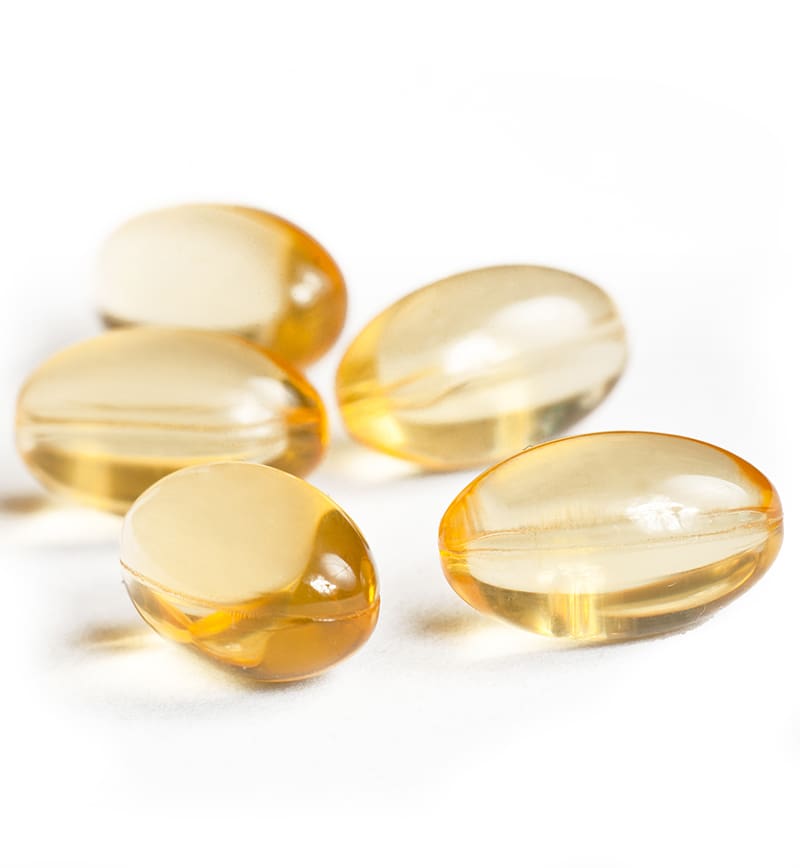 CLA for Fat Loss: The Fat that Makes You Ripped
CLA for Fat Loss: The Fat that Makes You Ripped
Conjugated linoleic acid is an omega-6 polyunsaturated fatty acid that is found in the fatty acid “linoleic acid.” Interestingly, CLA acts as an antioxidant, helping to prevent free radical oxidative damage in human tissue. CLA was first hailed for its pronounced anti-cancer effects. Linoleic acid is naturally found in dairy products and beef, and the average diet supplies 15-170 mg of conjugated linoleic acid per day. CLA can be found in beef patties and milkshakes. In addition to its potent antioxidant and anti-cancer abilities, CLA also prevents atherosclerosis (hardening of the arteries), and weight loss. CLA works by reducing body fat by preventing fat accumulation in fat cells. CLA inhibits the activity of the enzyme lipoprotein lipase (LPL).
This enzyme transfers fats from the bloodstream to the fat cells. As a result of the decreased enzyme activity, the transport of fat into fat cells is blocked. At the same time CLA also stimulates the breakdown of stored body fat (lipolysis). Studies have shown that CLA increases the disintegration of cells (apoptosis), resulting in a decreased number of existing fat cells.
Early CLA experiments on laboratory rats generated considerable buzz in the industry when researchers added CLA to the diet of rats, it promoted relatively rapid weight loss in a variety of lab animals. Perhaps more important, the animals lost body fat while increasing their lean muscle mass. Earlier research reported that animals being fed CLA ate less food and lost more body fat than animals not supplemented with CLA. One research study found a diet including 0.5% CLA resulted in animals with 50% to 75% less body fat! In human studies, obese people who took CLA lost about a full inch from their waistbands over 12 weeks – compared to a control group who took no CLA and did not have a significant change in waist measurement. The groups had no change in eating or exercise habits during the period. In another study, 1,800 mg of CLA taken daily for three months was related to up to a 20% decrease in body fat.
A Norwegian study documented significant body-fat loss with just 1.8 grams of CLA per day. This double-blind, placebo-controlled, randomized study of 20 healthy, normal-weight people lasted three months. Subjects performed standardized exercises for 90 minutes, three times a week. They consumed either a placebo or 1.8 grams of a commercially available CLA mixture. Subjects taking CLA experienced significant reductions in body fat, whereas the placebo subjects showed no change in body fat.
60 overweight or obese subjects who were randomly assigned to one of five groups and received daily doses of 1.7-6.8 grams of CLA or placebo. Body fat was measured at baseline and then at six and 12 weeks. At the end of 12 weeks, researchers found significantly greater body-fat loss among the groups taking 3.4 grams or more of CLA compared to the control subjects. Intriguingly, the group receiving 1.7 grams of CLA experienced no significant body-fat loss, nor did the groups taking more than 3.4 grams of CLA see any additional body-fat loss.
Researchers concluded that a dose of 3.4 grams results in significant body-fat loss compared to placebo, but that greater amounts of CLA do not result in a greater fat loss.
Most people think that they can get adequate amounts of CLA from the diet but according to current research, 3 grams per day (or 3000 mg) is the minimum dosage of CLA in clinical testing found to provide a substantial weight loss effect. To get 3 grams of CLA from your diet you would have to consume 7 pounds of Grass-Fed Beef or 4 gallons of Milk to get the equivalent of 3 grams of CLA.
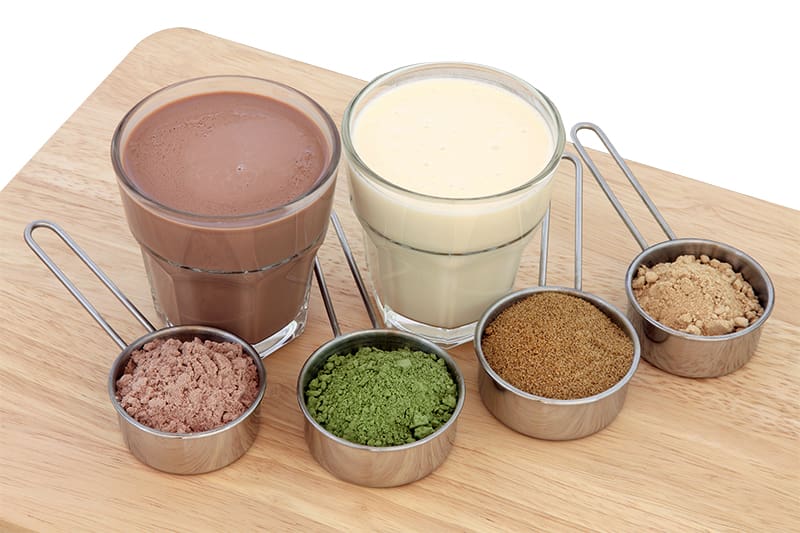
Best Supplements for Fat Loss: Whey, Synephrine, Caffeine, Green Tea
Most athletes think of supplements like caffeine, green tea, synephrine, ect as powerful stimulators of metabolism. Most people don’t realize that consuming whey protein before a resistance exercise bout can be very thermogenic as well.
Acute studies have reported that whey protein isolate (60 grams per day) evaluated over six months resulted in significantly lower hyperinsulinemia (less fat storage potential), lower cortisol levels (lean muscle preservation) and increased ghrelin release (satiety enhancement).
A study released in Nutrition & Metabolism reported that people on whey protein supplementation lost more weight than a control group receiving maltrodextrins in conjunction with a calorie-restricted diet. After 12 weeks, weight loss was consistently higher in the whey protein subjects, primarily the result of losing body fat (subjects taking whey protein lost 6.1 percent of their body fat mass). The whey protein group subjects also lost significantly less lean muscle mass compared to control subjects.
Whey protein may be the perfect fat-loss supplement when dieting for an important event or for targeting fat loss while maintaining lean muscle1. Since whey is nutrient dense but relatively low in energy (~4 kcal/g), supplementation is an efficient method to promote skeletal muscle anabolism while promoting catabolism in fat cells and therefore is hypothesized to improve both muscle growth and fat loss.
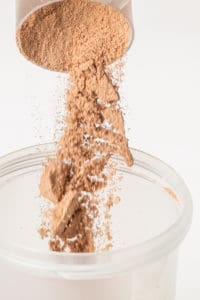 Whey Protein Increases Post Exercise Metabolic Rate and Fat Loss
Whey Protein Increases Post Exercise Metabolic Rate and Fat Loss
To determine whether whey protein supplementation before an acute bout of heavy resistance training would influence postexercise resting energy expenditure (REE) and fat oxidation.
Eight resistance-trained subjects participated in a double blind two-trial crossover design, where resting energy expenditure and fat oxidation were measured at 7:00 a.m. on four consecutive days. On the second day of trial 1, subjects consumed either whey protein (18 g of whey protein, 2 g of carbohydrate, 1.5 g of fat) or carbohydrates (1 g of whey protein, 19 g of carbohydrate, 1 g of fat) 20 min before a single bout of heavy resistance exercise (nine exercises, 4 sets, 70%-75% 1-repetition maximum).
Resting energy expenditure and fat metabolism were measured 24 and 48 h after heavy resistance exercise. During trial 2, the same protocol was followed except subjects consumed the carbohydrate supplement before heavy resistance exercise.
Compared with baseline, REE was elevated significantly in both CHO and PRO at 24 and 48 h after heavy resistance exercise.
At 24 h after heavy resistance exercise, resting energy expenditure in response to whey protein was significantly greater compared with carbohydrate.
Fat oxidation increased significantly in both carbohydrate and whey protein group at 24 hours after heavy resistance exercise compared with baseline. No differences were observed in total energy intake, macronutrient intake, or heavy resistance exercise volume.
Timing whey protein before heavy resistance exercise may be a simple and effective strategy to increase energy expenditure by elevating resting energy expenditure the day after heavy resistance exercise. Increasing resting energy expenditure could facilitate reductions in body fat mass and improve body composition if nutritional intake is stable. Milk to get the equivalent of 3 grams of CLA.
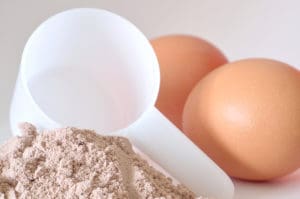
New Research Discovers Whey Protein for Breakfast Better than other Proteins for Fat Loss
Whey is seen as a more attractive protein for use as a dietary supplement compared to casein, egg protein, tuna, or soy protein due to differences in the amino acid composition and absorption kinetics. Whey protein powder, which is a byproduct of milk during cheese production, induced greater satiety and reduction of glucose spikes after meals compared to other protein sources, such as eggs, soy or tuna.
Whey protein has a higher proportion of branched chain amino acids than casein, and is more soluble in the acidic environment of the stomach, leading to more rapid digestion. Hence, it is termed a “fast” protein while casein is a “slow” protein.
As a result of greater solubility, more rapid digestion, and resultant higher plasma concentrations of amino acids, whey appears to be a more favorable protein to provide nutritional and functional benefits.
Whey protein is no longer just a bodybuilding post-workout drink, whey protein is gaining recognition as an essential functional health food. Whey protein has also been shown to have beneficial effects for diabetic patients including enhancement of insulin and incretin hormone secretion, slowing of gastric emptying, and reductions in appetite and energy consumption. These properties suggest the potential for whey in the management of type 2 diabetes.
In the newest study reported at the 2016 Endocrine Society randomly assigned 48 overweight and obese participants with Type 2 diabetes who were, on average, 59 years of age, to one of three diets that contained the same number of calories.
The subject’s with type 2 diabetes ate the same amount of calories over a large breakfast (660 kcal), medium-sized lunch (567 kcal), and small dinner (276 kcal) for 23 months. Participants in both protein groups ingested 49 grams of protein at breakfast compared with 17 grams in the carbohydrate group.
For 23 months, all participants ate a large breakfast, medium-sized lunch, and small dinner, but the breakfast composition, amount, and source of proteins differed among the groups.
-One group ate breakfast containing mostly whey protein such as whey protein shakes,
-the second group ate breakfast containing other proteins including eggs, soy and tuna, and
-the third ate breakfast high in carbohydrates or starch.
After 12 weeks, the group on whey protein lost the most weight: 16.7 pounds, compared to 13.4 pounds for those on the other proteins, and 6.8 pounds for those in the carbohydrate group.
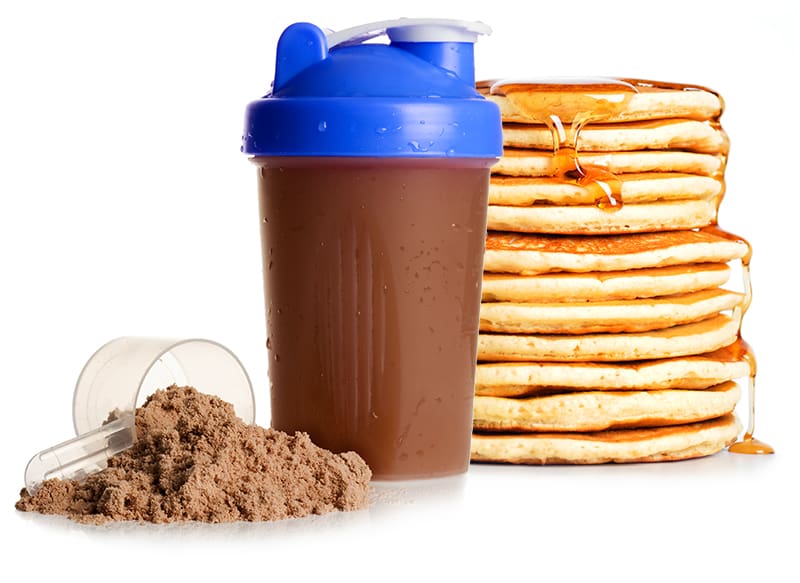
Whey protein diet participants were more satiated and less hungry throughout the day, with lower glucose spikes after meals compared to the other two diets, and their HbA1C (i.e. measure of long-term blood glucose levels) also decreased more than with the other two diets. Greater reductions in HbA1c were also noted among these patients, with the percent change being 11.5% for the whey protein group vs. 7.7% for the other protein group and 4.6% in the carbohydrate group. This study demonstrates the importance of consuming a high-quality whey protein drink at breakfast.
Additionally, compared to whey protein vs. other protein sources, whey protein yields additional benefits on weight loss, overall satiety, reduction of post-prandial glucose and HbA1c (i.e. measure of long-term blood glucose control). Whey protein should be considered an important therapy in the management of type 2 diabetes.

Elevate Your Metabolic Rate and Increase Fat loss with Caffeine and Synephrine
p-Synephrine is the primary alkaloid in bitter orange extract which is derived from the immature fruits of Citrus aurantium. Synephrine was big about 10 years ago with the pre-workout drink “Ultimate Orange” but it seems like synephrine is making a comeback in the bodybuilding world. Synephrine was invented when ephedrine became banned as a supplement. Synephrine is structurally similar to adrenaline, noradrenaline, and ephedrine.
Several studies have confirmed the metabolic effects of synephrine that are useful for bodybuilders such as: enhancing thermogenesis. Synephrine is widely used in combination with caffeine and other ingredients in products designed to support weight management. A previous study reported that 20mg of synephrine with 325 mg of caffeine increased energy expenditure in humans. In a meta-analysis of human studies involving p-synephrine alone or in combination with other nutrients increased resting metabolic rate and energy expenditure by up to ~13 %, and led to modest reductions in body weight.
Many supplement companies advocate synephrine and caffeine for weight loss, but according to a new study from the Department of Health and Exercise Science from the College of New Jersey, published in the Journal of the International Society of Sports Nutrition, synephrine can enhance repetitions performed in the gym. There are not any studies to date examining the validity of synephrine for performance enhancement, so researchers wanted to put synephrine to the test.
Twelve healthy, college-aged men performed a control resistance exercise protocol consisting of 6 sets of squats for up to 10 repetitions per set using 80 % of their one repetition maximum with 2 minute of rest in between sets. Each subject was randomly assigned (in double-blind, balanced manner) to a treatment sequence consisting of use of 3 supplements trials:
-p-synephrine (100 mg),
-p-synephrine + caffeine (100 mg of
p-synephrine plus 100 mg of caffeine), or
-a placebo.
The subjects consumed the supplements each day generally during the late morning, early afternoon hours. Subjects were also given the supplements before each resistance exercise protocol. So the subjects took the supplement in three doses throughout the day. Subject completed all the trials and were assigned to all the groups to compare the differences.
At the end of the study, supplementation with 100 mg of p-synephrine alone and in combination with 100 mg of caffeine significantly increased the average power, velocity, numbers of repetitions performed (i.e., synephrine and synephrine and caffeine resulted in a nearly 3-repetition augmented performance across all sets although most of the enhancement was seen during the last 3–4 sets), and volume performance compared to placebo.
The other positive benefit with synephrine was that no side effects were reported throughout the experimental period. The author concluded at the end of the study, “synephrine and synephrine and caffeine augmented resistance exercise performance (total repetitions, volume load). The addition of synephrine and caffeine increased mean power and velocity of squat performance. These results indicate supplementation with synephrine and synephrine and caffeine can enhance local muscle endurance during resistance exercise. The addition of caffeine to p-synephrine resulted in faster, more powerful repetitions.”

Training: Two Minutes of Interval Training as Effective as 30 Minutes of Cardio
What would you rather do to get ripped? Spend an hour on the treadmill running at a slow speed or 20 minutes doing interval training. Interval training has a ton of benefits when compared with steady state cardio activity. It takes less time to perform interval training, and it also creates more of a metabolic demand to perform and raises metabolic rate.
While the mechanisms responsible for the increase in metabolism are debated, interval training is reported to increase metabolic rate by increased glycogen resynthesis, dissipation of lactate after exercise, catecholamine-induced increases in metabolism and lipolysis, thermic effect of exercise and food, and increased muscle-protein turnover (muscle damage/repair).
However, it has been suggested that high-intensity interval training induces a larger excess postexercise oxygen consumption (EPOC) than continuous cardio because of the intense nature of the protocol.
In a previous study, participants performed hour-long workouts four times a week. While everyone did 40 minutes of strength training, they were divided into two groups for cardio. One group ran for 20 minutes on a treadmill and the other group performed body-weight intervals for 20 minutes.
At the end of eight weeks, the interval participants lost two inches of belly fat compared to the runners who lost less than one inch.
If you’re looking to get the most bang for your buck for burning calories, then you want to perform exercises that are metabolically demanding. Usually, the exercises that we hate the most, the ones that leave you gasping for breath, are the ones that burn the most calories. Doing bench press, is not going to burn a lot of calories despite it being guy’s favorite exercise to perform. Most people would think that the squat or deadlifts would be the most metabolically demanding exercise to perform, but the newest research may shock you. Researchers wanted to quantify and compare the acute metabolic responses to resistance exercise protocols comprising free-weight, body-weight, and battling rope exercises.
Ten resistance-trained men performed 13 resistance exercise protocols on separate days in random order consisting of only one exercise per session.
For free-weight exercise protocols, subjects performed three sets of up to 10 repetitions with 75% of their one repetition maximum. For the push-up and push-up on a BOSU ball protocols, subjects performed three sets of 20 repetitions. For the burpee and push-up with lateral crawl protocols, subjects performed three sets of 10 repetitions. For the plank and battling rope circuit protocols, subjects performed three sets of 30-second bouts. A standard 2-minute rest interval was used in between all sets for each exercise.
At the end of the study, oxygen consumption was significantly greatest during the battling rope and burpee protocols. For the free-weight exercises, highest average values were seen in the squat, deadlift, and lunge. No differences were observed between push-ups performed on the floor vs. on a BOSU ball. However, adding a lateral crawl to the push-up significantly increased mean oxygen consumption. The lowest mean value was seen during the plank exercise.
These data indicate the performance of exercises with battling ropes and a body-weight burpee exercise elicit relatively higher acute metabolic demands than traditional resistance exercises performed with moderately heavy loading. If your looking to burn some serious calories, start swinging the ropes.
Want Six Pack Abs?
 Planks: Best Abdominal Exercise
Planks: Best Abdominal Exercise
Another interesting finding was reported in the Journal of Strength and Conditioning Research was that crunches may not be the best exercise for abdominals. In a previous study that compared abdominal and erector spinae (lower back) activity during exercises with and without a balance component. For example, the participants completed a bridge exercise with both feet on the ground and with one leg lifted. The average EMG amplitude was also at least 20% greater in the abdominal muscles with one leg elevated and was 200% higher in the external oblique muscles. This means exercise that requires balance activate the abdominals more than stationary abdominal exercise. Countless exercises target the primary core trunk muscles (abdominal and lumbar) with the aim of providing these benefits. However, it is unknown as to which exercises elicit the greatest activation thereby maximizing functional gains and peak performance.
 Researchers examined whether integration core exercises that require activation of the distal trunk muscles (deltoid and gluteal) elicit greater activation of primary trunk muscles in comparison with isolation core exercises that only require activation of the proximal trunk muscles. The participants then performed 7 core exercises (4 isolation and 3 integration, respectively): the crunch, an oblique crunch, prone back extension with forward arm elevation, bird dog with resistance and hover with contralateral arm reach, side plank with arm raise, and mountain climber with alternating hip flexion to the opposite elbow.
Researchers examined whether integration core exercises that require activation of the distal trunk muscles (deltoid and gluteal) elicit greater activation of primary trunk muscles in comparison with isolation core exercises that only require activation of the proximal trunk muscles. The participants then performed 7 core exercises (4 isolation and 3 integration, respectively): the crunch, an oblique crunch, prone back extension with forward arm elevation, bird dog with resistance and hover with contralateral arm reach, side plank with arm raise, and mountain climber with alternating hip flexion to the opposite elbow.
At the end of the study, the researchers found that the activation of the abdominal and lumbar muscles (lower back) was the greatest during the exercises that required shoulder and gluteal recruitment. In fact, the abdominals and lower back were generally 20% greater during integration exercises (i.e. plank exercises) compared with the isolation exercises (i.e. crunches).
In conclusion, when completing abdominal exercises, including planks and other exercises can enhance the abdominal activation of those muscles compared to traditional crunches.
4 X 20 Routine Lose 1 KG of Fat
What would you rather do to get ripped? Spend an hour on the treadmill running at a slow speed or 20 minutes doing interval training. Interval training has a ton of benefits when compared with steady state cardio activity. It takes less time to perform interval training, and it also creates more of a metabolic demand to perform and raises metabolic rate, meaning greater fat loss. While the mechanisms responsible for the protracted increase in VO2, such as cost of glycogen resynthesis, dissipation of lactate, echolocation-induced increases in metabolism and lipolysis, thermic effect of exercise and food, and increased muscle-protein turnover (muscle damage/repair), were not measured in this study, all have previously been documented to play a role.
Short-term high-intensity interval training (HIIT) induces physiological adaptations that are similar to continuous moderate-intensity endurance training despite a reduced total exercise volume and time commitment. However, it has been suggested that HIIT causes a larger excess postexercise oxygen consumption (EPOC) than END because of the intense nature of the protocol. Sprint interval training sessions require participants to perform repeated short duration (often approximately 30–60 seconds) bouts at very high or maximal power output, each separated by a recovery period of very low-intensity exercise. There are also reports that very high intensity, short duration training can lead to loss of total body fat mass. Researchers wanted to examine the impact of high intensity sprint interval training on fat loss and cardiovascular improvements in men and women. A total of 24 men and 17 women were tested in this study. Body fat and lean mass were measured by and fasting blood lipid, glucose and insulin profiles were assessed before and after training.
 Sprint Interval Training consisted of 4 bouts of ×20 seconds sprints on a cycle ergometer at approximately 175% VO2 max, three times per week for 12 weeks. Each of these intervals was separated by 2 min of very low-intensity cycling (a workload of approximately 20% of that attained at VO2max). Thus, each training session lasted less than 10 min, and only 80 s was completed at an intensity that would be expected to improve physical fitness.
Sprint Interval Training consisted of 4 bouts of ×20 seconds sprints on a cycle ergometer at approximately 175% VO2 max, three times per week for 12 weeks. Each of these intervals was separated by 2 min of very low-intensity cycling (a workload of approximately 20% of that attained at VO2max). Thus, each training session lasted less than 10 min, and only 80 s was completed at an intensity that would be expected to improve physical fitness.
At the end of the study, the men after just 80 seconds of very intense sprint exercise per session, equal to 48 min exercise over 12 weeks, resulted in statistically significant increases in fat loss.
It may sound unconventional, but you can actually lose more bodyfat by spending less time in the gym. People can no longer use the excuse that they don’t have time to exercise because based on these new studies, interval training with as little as 10-20 minutes, can result in substantial fat loss while improving cardiovascular levels.

More Exercise or Larger Calorie Restriction… What’s Better for Fat Loss?
Researchers examined if calorie restriction by either diet or exercise was more effective for fat loss. Subjects were assigned to either a 3-day isocaloric 25% energy depletion by dieting alone or by aerobic exercise alone differently affects appetite and appetite-related hormones, ad libitum feeding, food reward (snack points), and olfaction. Ten male participants participated in this randomized crossover design. 25% daily needs energy deficits induced by diet only and by exercise. Body weight, leptin and ghrelin concentrations, were measured at days 1 and 4. So what the researchers found was fascinating: Compared with the control condition, reducing calories by 25% DIET represented a greater acute challenge to appetite regulation than exercise, as demonstrated by greater appetite and amount of food they were allowed to eat. This study confirms that compared with depletions by exercise alone, acute caloric restriction results in rapid changes in appetite that result in compensatory eating, which may initially dissuade potential success in fat loss efforts.
So it seems that dropping calories by dieting too fast is a sure way to make your life miserable with greater increases in hunger compared to more exercise. But it seems that adding more protein is best for fat loss.
BONUS TIP: Don’t Try to Lose Weight Too Fast
If you lose weight, (lose fat) too fast, you lose more muscle than when you slowly cut back on your calories. Researchers examined the impact of slow and rapid dieting on muscle mass. The researchers put 25 participants on a five-week very-low-calorie diet of just 500 calories per day. Another 22 volunteers went on a 12-week low-calorie diet of 1,250 calories per day. The investigators found that right after the end of their diets, both groups had similar levels of weight loss. The average weight loss was a little over 19 pounds among those on the very-low-calorie diet and just under 19 pounds among those on the low-calorie diet. The researchers then looked at the loss of lean muscle mass. Participants on the very-low-calorie diet had lost about 3.5 pounds of fat-free mass, compared with 1.3 pounds among those on the low-calorie diet. Fat-free mass accounted for 18 percent of weight loss in the very-low-calorie diet group and 7.7 percent of weight loss in the low-calorie diet group, the study found. Four weeks after the end of their diets, reductions in fat-free mass averaged 1.8 pounds among those in the very-low-calorie diet group and 0.7 pounds among those in the low-calorie diet group. Fat-free mass accounted for 9.4 percent of weight loss in the very-low-calorie diet group and 2.9 percent of weight loss in the low-calorie diet group, according to the report. So losing weight too fast by crash dieting while not only strip your body of fat, but it will also strip your body of muscle. Plan for a slow gradual reduction in weight for a successful weight loss plan.
Antonio J, Ellerbroek A, Silver T, Orris S, Scheiner M, Gonzalez A, Peacock
CA. A high protein diet (3.4 g/kg/d) combined with a heavy resistance training program improves body composition in healthy trained men and women–a follow-up investigation. J Int Soc Sports Nutr. 2015 Oct 20;12:39.
Bagley, Liam, et al. “Sex differences in the effects of 12 weeks sprint interval training on body fat mass and the rates of fatty acid oxidation and VO2max during exercise.” BMJ Open Sport & Exercise Medicine 2.1 (2016): e000056.
Rønnestad BR, Hansen J, Vegge G, Tønnessen E, Slettaløkken G. Short intervals induce superior training adaptations compared with long intervals in cyclists -An effort-matched approach. Scand J Med Sci Sports. 2015 Apr;25(2):143-51.
Hazell TJ, Olver TD, Hamilton CD, Lemon P WR. Two minutes of sprint-interval exercise elicits 24-hr oxygen consumption similar to that of 30 min of continuous endurance exercise. Int J Sport Nutr Exerc Metab. 2012 Aug;22(4):276-83.
Burgomaster, Kirsten A., et al. “Similar metabolic adaptations during exercise after low volume sprint interval and traditional endurance training in humans.” The Journal of physiology 586.1 (2008): 151-160.
Ratamess NA, Rosenberg JG, Klei S, Dougherty BM, Kang J, Smith CR, Ross RE, Faigenbaum AD. Comparison of the acute metabolic responses to traditional resistance, body-weight, and battling rope exercises. J Strength Cond Res. 2015 Jan;29(1):47-57.
Gottschall, Jinger, Jackie Mills, Bryce Hastings. Integration Core exercises Elicit Greater Muscle Activation than Isolation Exercises. Journal of Strength and Conditioning Research. 2013
Rønnestad BR, Hansen J, Vegge G, Tønnessen E, Slettaløkken G. Short intervals induce superior training adaptations compared with long intervals in cyclists -An effort-matched approach. Scand J Med Sci Sports. 2015 Apr;25(2):143-51.
Hazell TJ, Olver TD, Hamilton CD, Lemon P WR. Two minutes of sprint-interval exercise elicits 24-hr oxygen consumption similar to that of 30 min of continuous endurance exercise. Int J Sport Nutr Exerc Metab. 2012 Aug;22(4):276-83.
Thomas M Longland, Sara Y Oikawa, Cameron J Mitchell, Michaela C Devries, and Stuart M Phillips. Higher compared with lower dietary protein during an energy deficit combined with intense exercise promotes greater lean mass gain and fat mass loss: a randomized trial. American Journal of Clinical Nutrition, January 2016 DOI:
Ratamess NA, Bush JA, Kang J, Kraemer WJ, Stohs SJ, Nocera VG, Leise MD, Diamond KB, Faigenbaum AD. The effects of supplementation with P-Synephrine alone and in combination with caffeine on resistance exercise performance. J Int Soc Sports Nutr. 2015 Sep 17;12:35.
Hackney KJ, Bruenger AJ, Lemmer JT. Timing protein intake increases energy expenditure 24 h after resistance training. Med Sci Sports Exerc. 2010 May;42(5):998-1003.
-Frestedt JL, Zenk JL, Kuskowski MA, Ward LS, Bastian ED. A whey-protein supplement increases fat loss and spares lean muscle in obese subjects: a randomized human clinical study. Nutr Metab, (Lond). 2008 Mar 27;5:8.
-Aldrich ND, Reicks MM, Sibley SD, Redmon JB, Thomas W, Raatz SK. Varying protein source and quantity do not significantly improve weight loss, fat loss, or satiety in reduced energy diets among midlife adults. Nutr Res. 2011 Feb;31(2):104-12.
-Layman DK, Baum JI. Dietary protein impact on glycemic control during weight loss. J Nutr 2004;134:968S-73S.
-Cribb PJUS. Whey proteins in sports nutrition. Applications monograph sports nutrition. US Dairy Exp Counc 2005;4:1-12.
-Nilsson M, Holst JJ, Bjorck IM. Metabolic effects of amino acid mixtures and whey protein in healthy subjects: studies using glucose equivalent drinks. Am J Clin Nutr 2007;85:996-1004.
Antonio J, Ellerbroek A, Silver T, Orris S, Scheiner M, Gonzalez A, Peacock CA. A high protein diet (3.4 g/kg/d) combined with a heavy resistance training program improves body composition in healthy trained men and women--a follow-up investigation. J Int Soc Sports Nutr. 2015 Oct 20;12:39.
Nagpal R, Behare P, Rana R, Kumar A, Kumar M, Arora S, Morotta F, Jain S, Yadav H. Bioactive peptides derived from milk proteins and their health beneficial potentials: an update. Food Funct. 2011;2:18–27.
Philanto A. Whey proteins and peptides: Emerging properties to promote health. NUTRA Foods. 2011;10:29–42.
Madureira AR, Tavares T, Gomes AM, Pintado ME, Malcata FX. Invited review: physiological properties of bioactive peptides obtained from whey proteins. J Dairy Sci. 2010;93:437–455.
van Meijl LE, Vrolix R, Mensink RP. Dairy product consumption and the metabolic syndrome. Nutr Res Rev. 2008;21:148–157.
de Wit JN. Marschall Rhône-Poulenc Award Lecture. Nutritional and functional characteristics of whey proteins in food products. J Dairy Sci. 1998;81:597–608.
Krissansen GW. Emerging health properties of whey proteins and their clinical implications. J Am Coll Nutr. 2007;26:713S–723S.
Marshall K. Therapeutic applications of whey protein. Altern Med Rev. 2004;9:136–156.
Bendtsen LQ, Lorenzen JK, Bendsen NT, Rasmussen C, Astrup A. Effect of dairy proteins on appetite, energy expenditure, body weight, and composition: a review of the evidence from controlled clinical trials. Adv Nutr. 2013;4:418–438.
Hall WL, Millward DJ, Long SJ, Morgan LM. Casein and whey exert different effects on plasma amino acid profiles, gastrointestinal hormone secretion and appetite. Br J Nutr. 2003;89:239–248.
Jakubowicz D, Landau Z, Wainstein J, Bar-Dayan Y, Froy O. OR12-3: Whey Protein Induces Greater Reduction of Postprandial Glycemia and HbA1c, Weight Loss and Satiety Compared to Other Protein Sources in Type 2 Diabetes. Presented at: ENDO 2016; April 1-4, 2016; Boston, MA.
Pariza MW, Ha YL. Conjugated dienoic derivatives of linoleic acid: a new class of anticarcinogens. Med Oncol Tumor Pharmacother 1990;7(2-3):169-71.
Park Y, Storkson JM, Albright KJ, Liu W, Pariza MW. Evidence that the trans-10,cis-12 isomer of conjugated linoleic acid induces body composition changes in mice. Lipids 1999 Mar;34(3):235-41.
DeLany JP, Blohm F, Truett AA, Scimeca JA, West DB. Conjugated linoleic acid rapidly reduces body fat content in mice without affecting energy intake. Am J Physiol 1999 Apr;276(4 Pt 2):R1172-9.
Thom E, Wadstein J, Gudmundsen O. Conjugated linoleic acid reduces body fat in healthy exercising humans. J Int Med Res. 2001 Sep;29(5):392-6.
Blankson H, Stakkestad JA, Fagertun H, et al. Conjugated linoleic acid reduces body fat mass in overweight and obese humans. J Nutr. 2000 Dec;130(12):2943-8.








